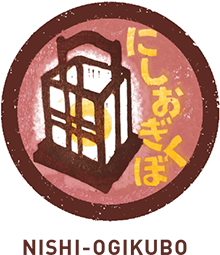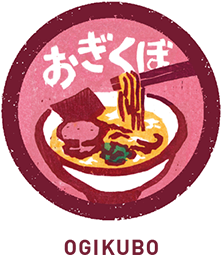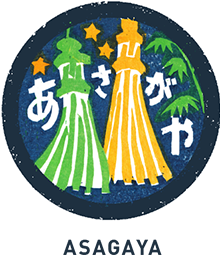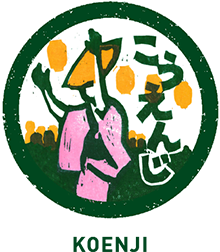KOENJI: TOKYO’S MUSIC MECCA, PART 2
Koenji’s Sonic Graffiti
by Ian Martin, Call And Response Records
I’ve always been attracted to the spaces between things. Those cracks between the everyday and the expected have a hypnotic sort of power to draw me in and make me see the world in a different way. But beyond the initial rush of the surreal, they also anchor a place in something more specific and lasting in a world where cities increasingly all look the same. These spaces are where you find the ramshackle izakaya hiding down a silent suburban street; the shop behind a windowless door on an unnoticed upper floor; the sudden splatter of stickers and graffiti over an electrical utility box; a blast of free jazz, thrash metal or tormented acoustic balladry from beneath a railway underpass. It’s these cracks in the facade of ordinary life that define Koenji and make it such an extraordinary place.
Koenji is often described as a music town, and it certainly is that. With at least twenty live music venues, bars and clubs scattered around its narrow streets, numerous practice studios, and a fistful of record stores offering kaleidoscopic tumbles down what are often dizzyingly specific or plain surreal sonic rabbit holes, Koenji is perhaps the most intense and uncompromisingly individual music neighbourhood in Tokyo — a reprobate counterpoint to its slightly more fashionable and respectable cousin Shimokitazawa. These degenerate sounds frequently spill out onto the streets in the form of impromptu live performances of wildly varying genre, technical skill and outright derangement: the people of the town, both residents and those simply caught in its strange gravity, painting the space in their own sort of sonic graffiti.
It’s a lot more than that too, though. When we think of a music town, we tend to imagine a place for young people, but Koenji (at least at its pre-pandemic best) has always been a patchwork of spaces occupied by young and old, incorporating music and the arts, collectors of cultural ephemera, food and fashion, dusty old bookstores and stubbornly nonspecific merchants crammed with unnavigable aisles of the sort of unexpected yet somehow deeply personal trash that gets euphemistically called “antiques”. Overflowing out of the yakitori joints that line the Chuo Line tracks, groups of all ages cluster around tables planted on rickety beer crates, painting the town in a graffiti of their own with only the sounds of their voices and the colour of their presence. Meanwhile, just a few metres away from the noise and the bustle, temples and graveyards sit in silent contrast.
When I first encountered Koenji, nearly twenty years ago, it was this atmosphere that hooked me in. In a city whose most immediate images are often the vivid neon of Shinjuku, the flashing, advertising screens of Shibuya and the screaming blasts of J-Pop and jingles out of pachinko parlours and shopping street speakers, the defiantly individual eccentricities of Koenji were like an alternate universe hiding between the cracks of commerce: a place I could wriggle inside of and feel at least a little bit at home.
The time all of this comes together is at the annual Awa-Odori festival that, until the hopefully temporary interruption of the pandemic, takes over the town for two and a half days every summer. With its origins far away in Tokushima, on the island of Shikoku, the dance festival made a second home for itself in Koenji in the 1950s and is now Tokyo’s largest street festival. Perhaps the festival’s ethos of “The dancer is a fool, the watcher is a fool, so you might as well dance,” has a particular sort of resonance in the area, where the creative, quirky and carefree are embedded into its tapestry of streets and people.
It would be easy for a small neighbourhood like Koenji to be drowned under the waves of visitors and dancers from across the country who descend on it for that weekend in August, but it isn’t: rather it’s the time when every facet of the town puts itself on display most proudly. Despite its roots in the 1500s (or earlier by some estimations), Awa-Odori takes on the aspect of a rock festival in how it fills the neighbourhood with a hundred small satellite parties, groups of friends drifting apart and coming together, touring food stands, casual festival-goers mixing with dedicated fanboys and old hands. But where a music festival like Fuji Rock every year constructs an artificial city out in the mountains, to be populated and brought to life anew each time by its staff and fans, Awa-Odori is rooted in what already exists in Koenji, acting as an intensifier for an atmosphere that is always simmering away there.
Why Koenji has this special vibe is hard to pin down. Perhaps some of it is just luck, with the historical chance blooming of punk culture there in the 1980s and ‘90s creating a feedback loop of alternative-minded folk drawn to it. Some of it might be the vagaries of the economy, with its Showa-era street layout left more or less intact without being flattened by large scale economic development, letting the town evolve piece by piece, building by building, shop by shop, person by person. Another factor might lie in the difficult-to-pin-down mix of ages, interests and styles that make the area up, meaning it has always existed at its own pace, just under the radar of the mainstream, slipping free of trends that might otherwise have caught it up in a boom and bust of hype.
With its colour and texture defined by so many small, economically tenuous, independent businesses, writing about Koenji in the middle of the COVID-19 pandemic is anxiety-inducing. How much of what makes it such a special place to me will still be here in two months, six months, a year? But beyond these individual spots and the unique memories and experiences that are tied to them, the people who have painted the town in their own strange, awkward, fierce, lazy, unexpected shapes and colours are the ones who will colour it anew, and in that at least, Koenji is unstoppable.








